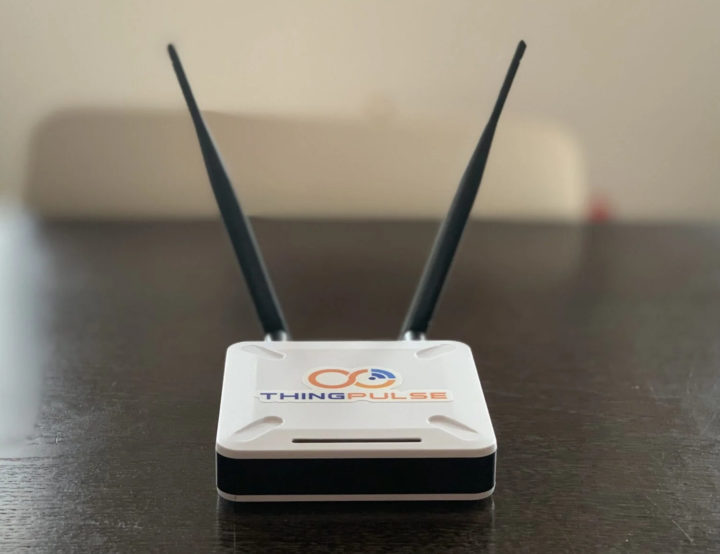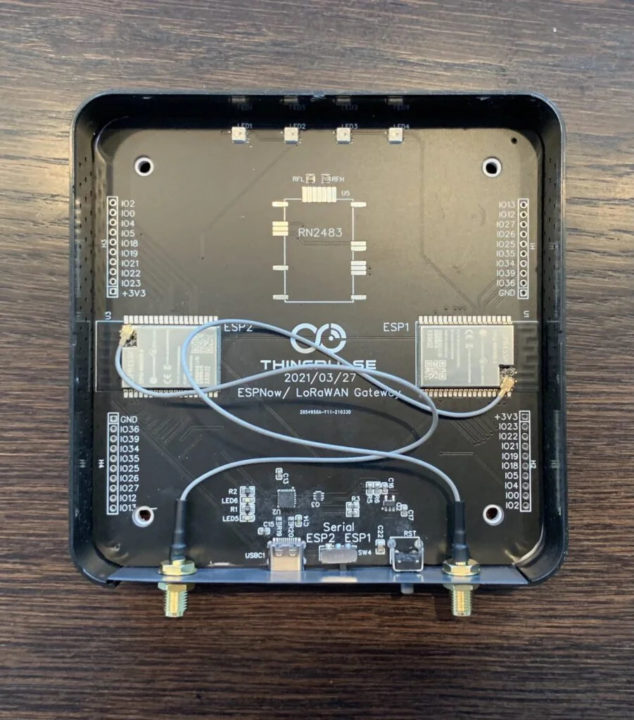ThingPulse ESPGateway is a WiFi and Bluetooth gateway equipped with two ESP32 modules, two external antennas, and a footprint for an RN2483 LoRaWAN chip.
The two ESP32-WROVER modules communicate over UART, and this design allows one ESP32 to transmit data over WiFi or Bluetooth, while the other remains in promiscuous mode, or transmits data using ESPNow low-power proprietary protocol for applications we’ll discuss below.
ESPGateway hardware specifications:
- Wireless connectivity
- 2x ESP32-WROVER-IB modules with dual-core ESP32 processor, 4MB flash, and 8MB PSRAM
- Footprint for RN2483 LoRaWAN module connected to one of the ESP32 module
- 2x external antennas for longer range
- Expansion – Unpopulated headers to access to 18 GPIO pins, 3.3V, and GND to add sensors, displays, actuators…
- Debugging – USB-C port for serial console connected to one CP2104 USB to TTL chip plus switch to select ESP1/ESP2 module
- Misc – 4x WS2812B programmable LEDs, Reset button
ThingPulse explains in more detail what this type of hardware could be used for in a blog post, namely:
- A person counter using WiFi and Bluetooth to estimate the number of people. One of the modules is used in promiscuous mode to capture beacons from smartphones or other devices, and the other to report data over WiFi since regular WiFi traffic is not possible while the ESP32 is in promiscuous mode.
- ESPNow gateway – ESPNow is a proprietary 2.4 GHz protocol developed by Espressif Systems to let ESP32 and ESP8266 modules communicate at low power without a router. In this configuration, one ESP32 would handle ESPNow traffic, and the other module regular WiFi traffic.
- Bluetooth Gateway – While in theory, it’s possible to create a Bluetooth gateway with only one ESP32 module, the guys at ThingPulse noticed they could not read out the data from all the BLE-enabled devices due to the range. As I understand it, here’s it’s not really the dual ESP32 that helps, but rather the high-gain antennas connected to the gateway that allow communication with Bluetooth LE devices as far as 10 meters away.
The ESPGateway can be purchased on ThingPulse store for $35 plus shipping.

Jean-Luc started CNX Software in 2010 as a part-time endeavor, before quitting his job as a software engineering manager, and starting to write daily news, and reviews full time later in 2011.
Support CNX Software! Donate via cryptocurrencies, become a Patron on Patreon, or purchase goods on Amazon or Aliexpress






